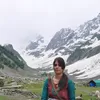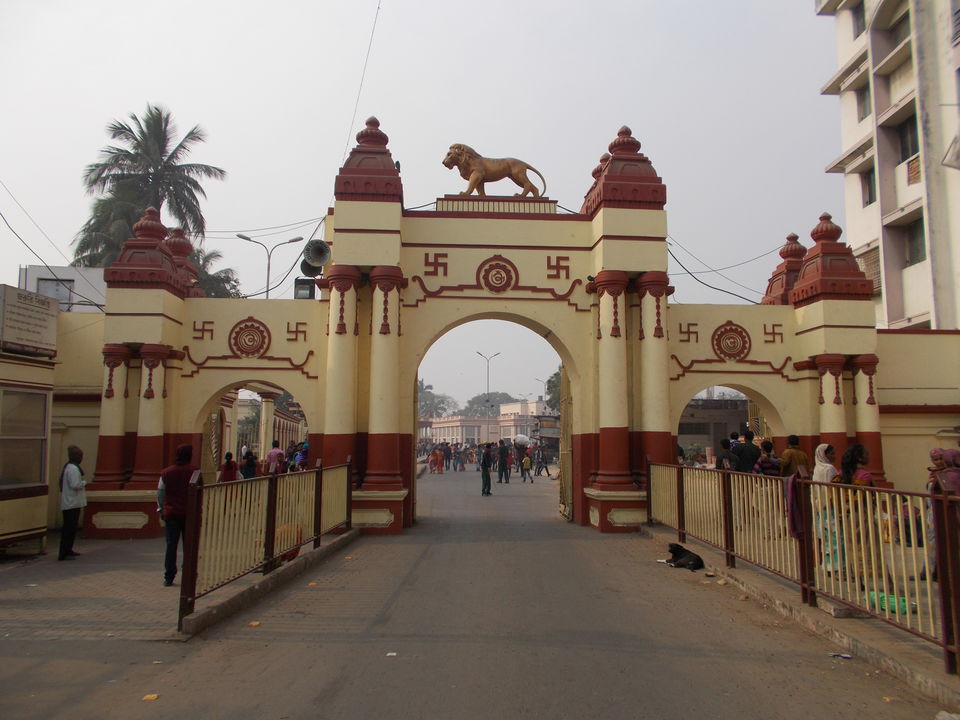
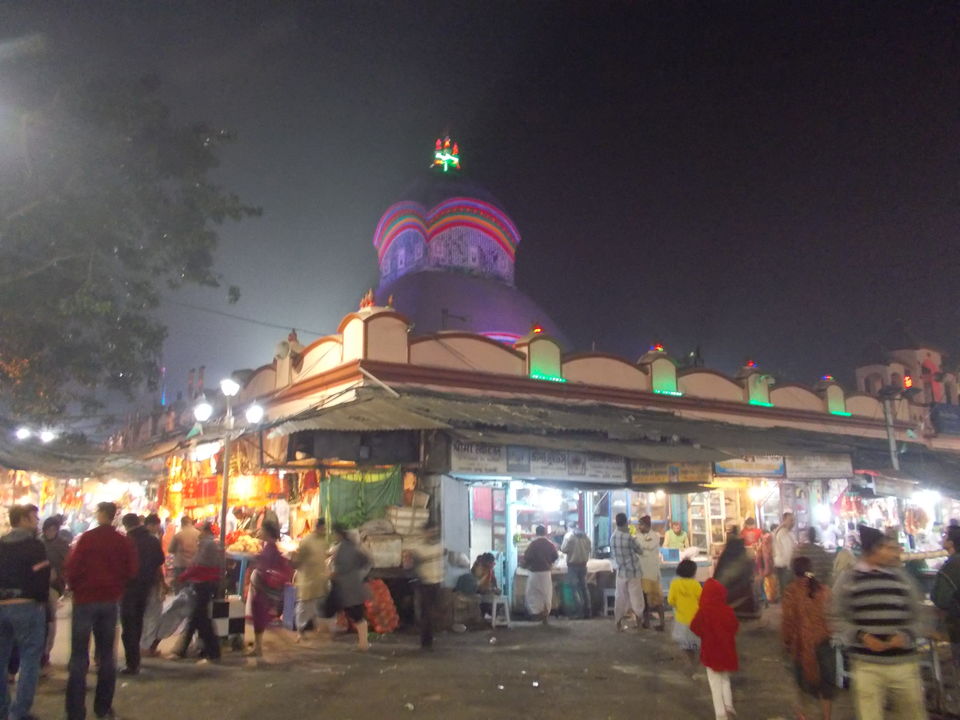
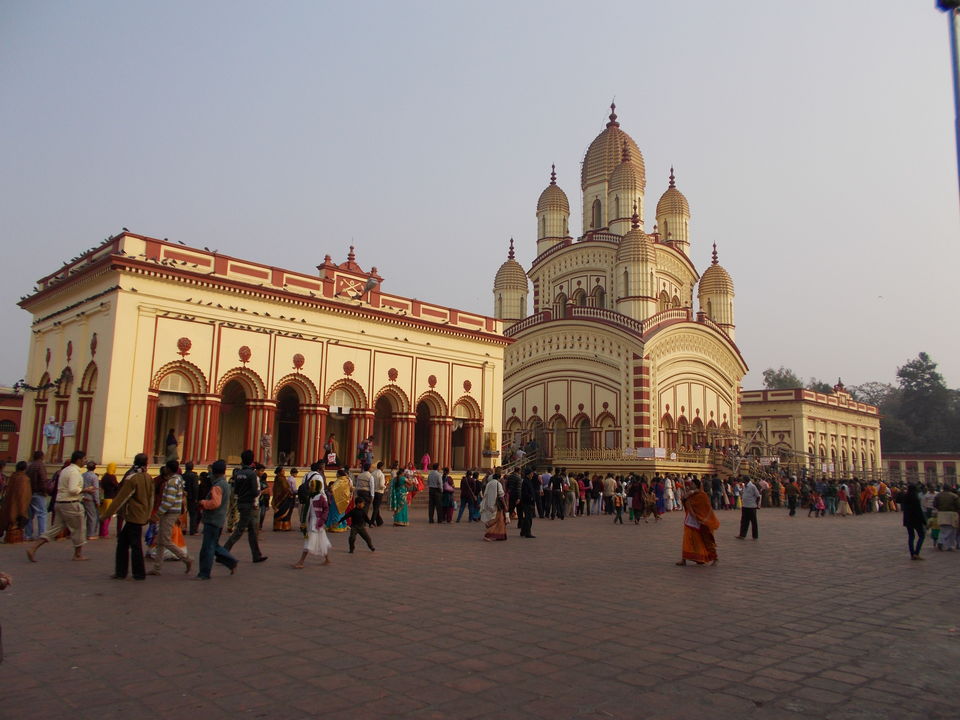
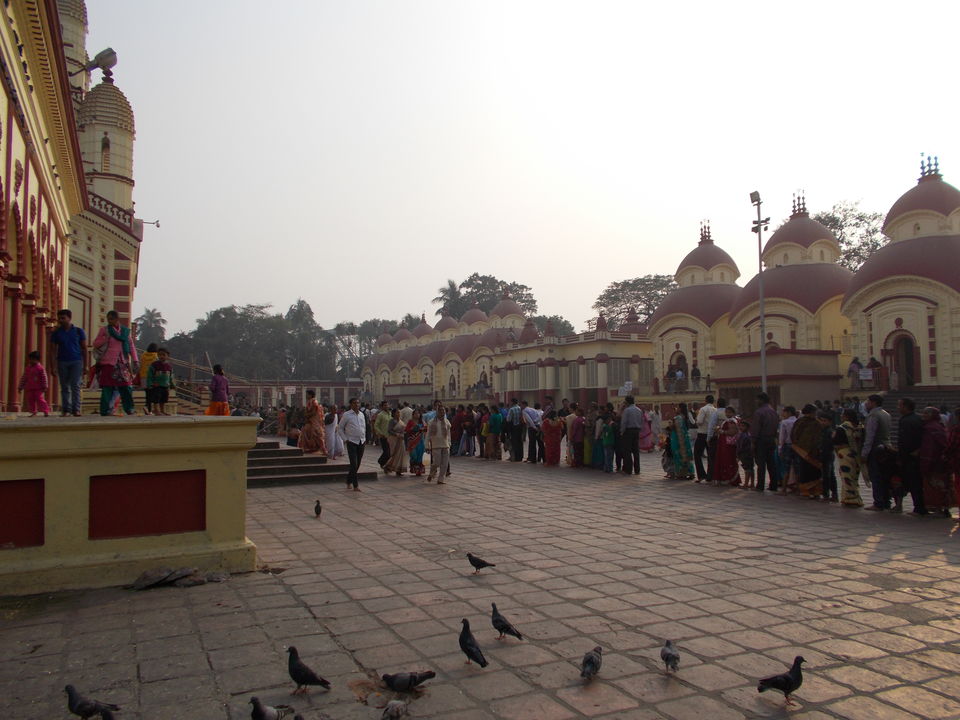
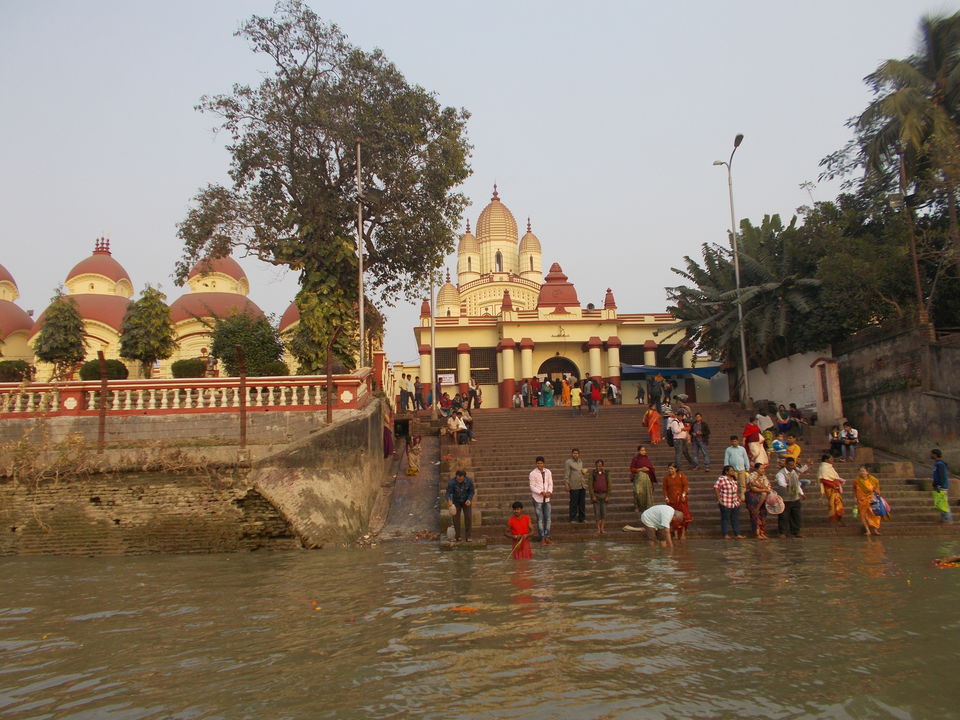
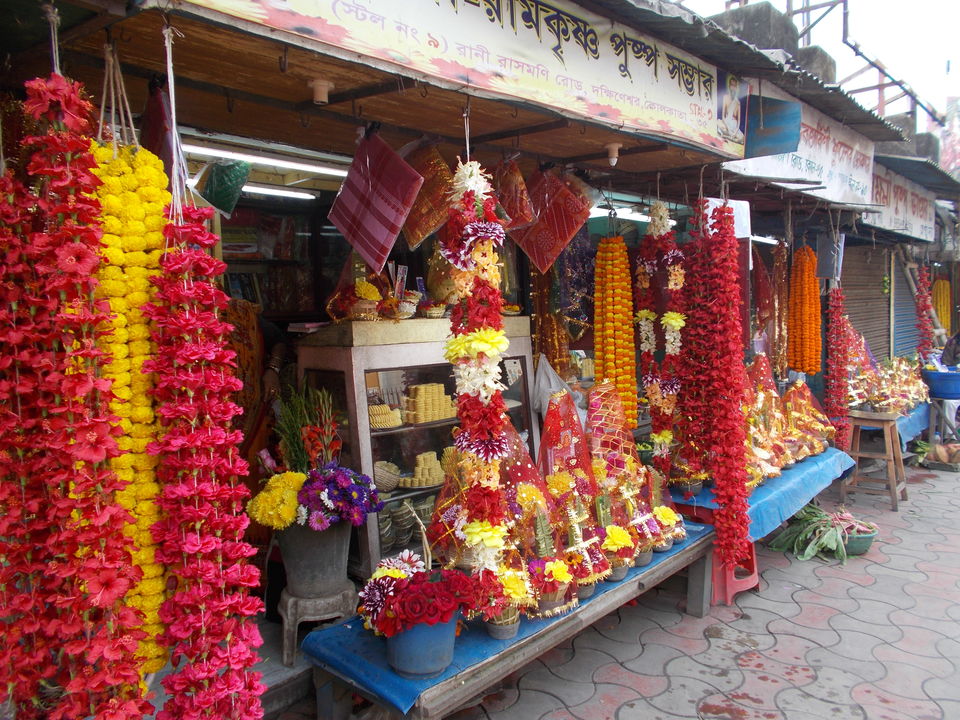
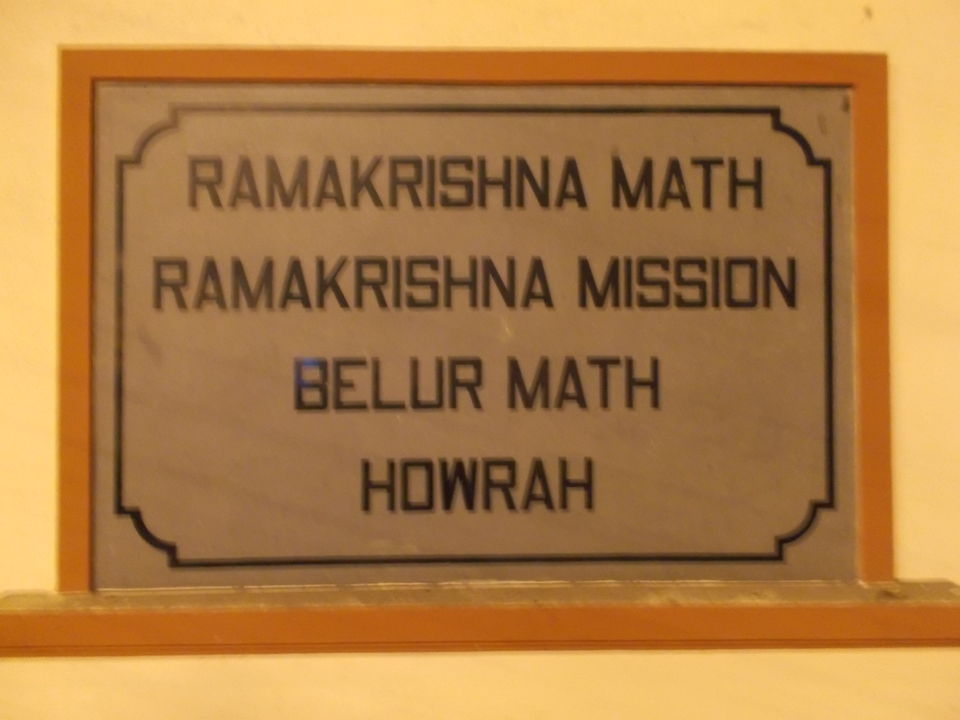
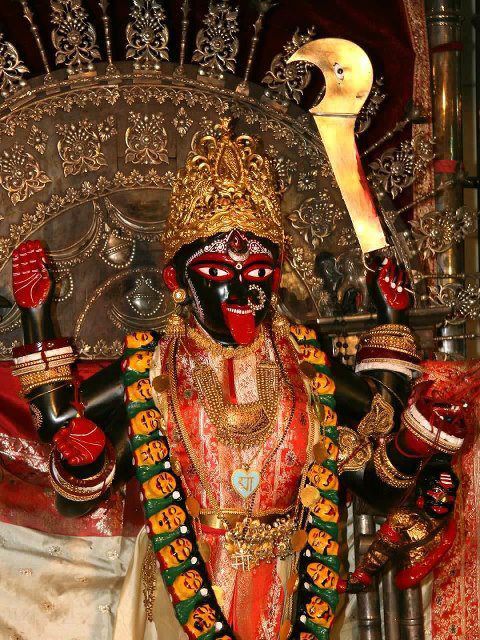
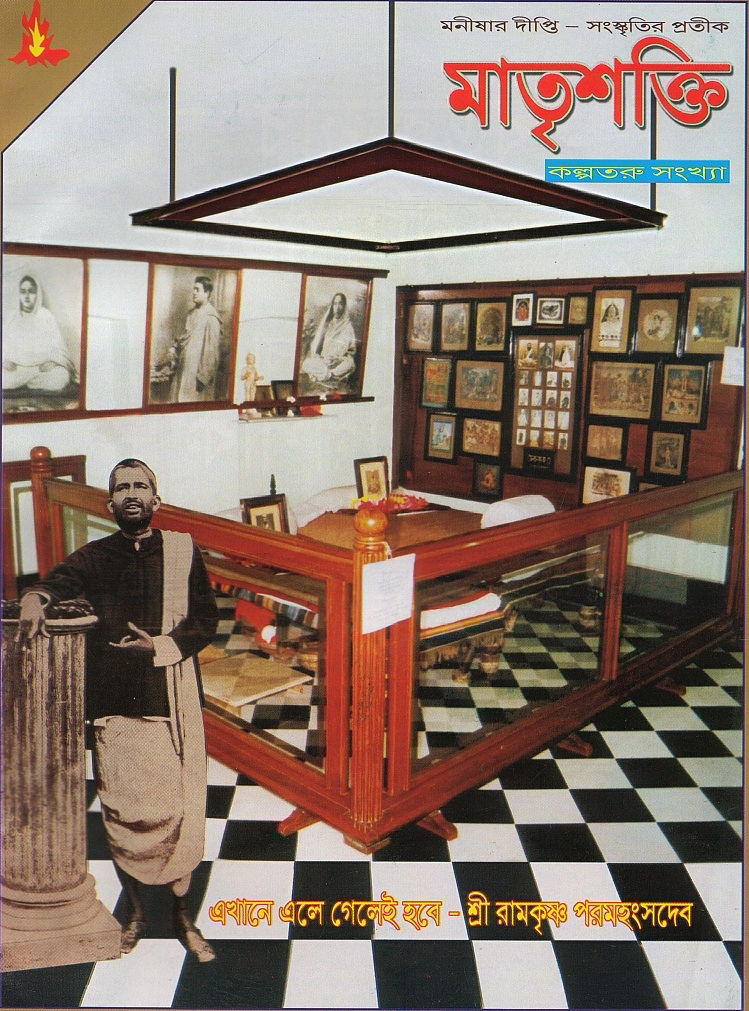
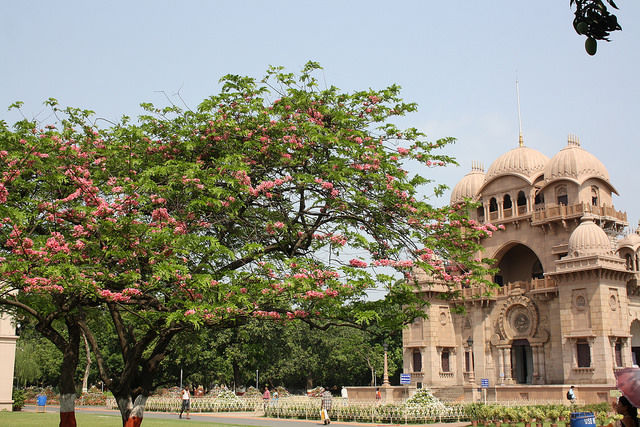
The One Who is the Kindest
The One Who is the Boldest
The One Who is the Darkest
The One Who is the Savior
To that Divine Mother, I bow I bow I bow.
A pilgrimage is one which ends with opening a way deep inside. With due respect to all pilgrim places and their sanctity, I allow myself to speak of one that incited in me such connection the strings of which are pulled each time I consider it in my memory. This post is not any other post; it’s a careful account of the Supreme, the devotees, the masters. It’s an account of me, you and everyone who walk the spiritual lanes for inner fulfillment.
My academic teacher once mentioned to us about his visit to the sacred abode of Divine Mother Kali located beside the calm but mighty waters of The Holy River Ganga in her own city – Kolkata. The etymology of Kolkata, besides other believed origins, seems to have its roots derived from Kalikkhetro meaning the field of Goddess Kali. Ever since I’ve wondered if my feelings would be the same as my teachers had I got chance to visit Dakshineshwara. I’ve often found myself disconnected from the crowded pilgrim places as it appeared to me as a mere ritual devoid of true feelings of devotion and peace. The greater the popularity, the bigger the risk of dissatisfied darshan followed by fatigue and noise. At least, I thought so. On second thought, I used to worship Mother Durga given to my early years of growing up and Mother Kali appeared ferocious and punishing to me.
In the year 2012, as we made our way to the “city of joy” Kolkata, I was quite astonished to step into the city. There prevailed a sense of warmth and ease in the faces that were welcoming. The journey from Howrah Station to Tollygunje (the place where our host stayed) seemed fun with the great Howrah Bridge standing tall in face of time and history. I sensed a vibration in the city which had a pleasant feeling, no fears. The life here is medium paced, cheerful and embracing with busy bazaars accommodating all. I felt welcomed! Past some days, my friend and host threw an idea to visit the two important seats of Goddess Kali- Kalighat and Dakshineshwara, also pointing out that the latter was quite far and should be visited on Sunday so that he could come along. One evening, we took time to visit Kalighat, which is a popular junction named after the Kalika Temple. We were prepared to see crowd, so when we arrived there were no surprises. Kalighat is also one of the fifty one Shakti Peethas which are important seats of energy of Shakti. It is said that when Goddess Sati (the first consort of Lord Shiva) assumed self immolation, the parts of Her corpse (Shava) fell down on different parts of earth which later were established and worshipped as Shakti Peetha. Kalighat is known to have contained the right toe of the Divine Mother. Since then, this became an important pilgrimage and source of divinity for the devotees who would throng here not only from Bengal and its vicinity but across India and other parts. The energy of Kalighat is vibrant and zealous as you move along busy roads with markets on either side. Kilometers ahead of the temple, one can see queues of shops selling flowers, pooja samigri, books and pictures of the idol. The temple is said to be originally located beside Ganga that, with passage of time, drifted away forming a small canal in place and it began to be called as ‘Adi Ganga’ The idol of the Goddess at Kaligaht Temple is characterized by a long protruding tongue made of Gold. Being Shakti Peetha, a Shiva Temple called Nakuleshwara is built beside.
The following Sunday, we decided to take pilgrimage to the other holy seat of Maa Kali – Dakshineshwara. A popular junction, Dakshineshwara, is well known as prominent abode of the Divine Mother and Her staunch devotee, a realized master Swami Ramakrishna Paramhansa. The sanctum sanctorum of Dakshineshwara derives its relevance in view of its historic backgrounds. The Divine Mother established in Her aspect of ‘Bhavatarni’ (the One Who liberates Her devotees from samsara) guided Rani Rashmoni, its founder, through a clear vision to construct the temple along the Holy River Ganga. Such were the developments that Swami Ramakrishna took charge of the priesthood, and Mother Kali revealed Herself to him through many routes. If one goes through the account of life and experiences of Sri Ramakrishna, one would realize how this Indian Yogi attained the highest perfection in the land of Dakshineshwara. His intimate realization of Mother was such that to him every being including his beloved wife Maa Sharada appeared a manifestation of Divine Mother so much so that Sri Ramakrishna began to address her as ‘Maa’. Absorbed in Supreme, Swami Ji was capable of passing on his divine visions to his followers who later turned his disciples. Today, even some hundred years later, the holy land of Dakshineshwara promises the same divine vibrations to its true devotees. Many had transformed and many continue to be so, in the light of Supreme Mother.
Spread over about twenty acres of land on the banks of Hooghly (another name for Ganga), the temple complex, at its first glance, looks like an architectural beauty which houses 12 identical temples manifesting different aspects of Lord Shiva and a Vishnu Temple or Radha Kant temple with idols of Radha Krishna. The series of temples are located close to the ghats of Maa Ganga with the main temple containing Mother Kali is placed in the center. A huge prayer hall lay ahead of the temple facing it so that devotees can see the idol during prayers and chanting. On the right hand corner, lay the living room (Shayan Kaksh) of Thakur (loving name for Swami Ramakrishna Paramhansa given by his disciples) which now has become the meditation center. The walls of the room stay decorated with the spiritual lineage of Ramakrishna Order along with the two enlarged photo frames of Swami Ji and his wife, disciple, a mother in her divinity, Maa Sharada which lay upright on a small bed. There’s a library encompassing work and spiritual teachings of the saints including those of Swami Ramakrishna and Swami Vivekananda.
A sense of peace and harmony prevails as one enters the temple site. The maddening crowd appears insignificant in the grandeur of the structure embodied with devotion, holiness and supreme knowledge. The far reaching calm waters of Ganga pacify your ego and the inner turbulence seems submerged deep in ever growing waves of Ganga. You come alive and present. Such is the majesty of divine vibrations travelling across the Dakshineshwara. It seems Maa Ganga has taken on to herself the task of carrying the divinity through her waters from one shore to another, from The Dakshineshwara to Belur Math, where the divine teachings of Sri Ram Krishna Paramhansa are executed and carried forward as legacy.
I remember how my first visit turned magical or should I say, miraculous. Being Sunday, we were held up by long queues and somehow my companions were not much interested in waiting for hours. We thought we would see around whatever possible and proceed to next destination Belur Math located on the other side of the Ganga. The same day I had had conversation with my teacher (whom I have mentioned in the beginning) and knowing our plan to visit Dakshineshwara, he suggested that I spent time in the Shayan Kaksh of Thakur. Somehow, I confused this with Belur Math, and therefore, my prime intention was not to miss that. So, surrounded by noise, both inner and outer, I agreed to what my friends said that we would sail to Belur Math. Suddenly, we heard someone saying that we could have a glimpse of the Goddess from the hall that lay facing the temple. We rushed to the front of the hall only to find crowd standing on their toes to be able to have one glimpse of the idol that lay some meters away inside the temple. I must say the energy there was quite vibrant but the challenge two fold- one, to manage to see through the crowd in the hall itself and a huge row just in front of the idol. But I must admit here, that the Divine Mother disappointed none. Considering my short height, I hanged on to one pillar and was determined to see at least a glimpse. In that moment, I gently closed my eyes and began to visualize the image of Mother Kali and pray. I would not hesitate to share that I had clear visions of a beautiful nose ring, the calling eyes and a blood red tongue. I am not sure what it was- a creation of my imagination or powerful vision, but in these few seconds tears started rolling down my eyes. The next moment, the crowds cleared up of my sight and the Mother revealed Herself to me. I was fulfilled, and astonished. Nothing of this sort had ever happened to me at any other place of pilgrim. A unique observation struck my mind that this image of Goddess Kali appeared both, true to its nature of ferocity and true to the benevolent nature of a mother. On that day, some fears about the form of Kali seemed to disappear. Somehow, we took leave of Her and I prayed in heart that my next visit should be planned soon. In some time, as we sailed across the waters of Ganga to arrive at Belur Math. It was almost dark.
Belur Math serves as headquarters of Ramakrishna Mission and Ramakrishna Math which should be considered as twin organizations fulfilling the divine goal set by Sri Ramakrishna and Swami Vivekananda. Belur Math derives its relevance from many aspects including that Swami Viveakananda spent the later years of his life here. He himself consecrated the grounds where a unique temple dedicated to his Guru Swami Ramakrishna Paramhansa containing his holy relics was eventually established. This temple in the center of the Math is a place of worship for monks, lay disciples and devotees. The architecture complemented by well maintained gardens adds to the beauty and serenity of the premises, beside its location near composed Ganga. Swami Vivekananda’s room where he attained Mahasamadhi, Swami Vivekananda Temple where his mortal remains had been cremated, Swami Brahmananda Temple who was the first President of Math and Mission, Ramakrishna Museum, Sharada Maa Temple facing the holy river, The Samadhi Enclosure where the mortal remains of sixteen direct disciples in Ramakrishna order were cremated are among the important components of Belur Math. The Math with its great artistic fervor is also known for its architecture, especially for that of Sri Ramakrishna Temple which testifies the message of unity as realized and dictated by Sri Ramakrishna Paramhansa.
It’s important to plan your visit properly, especially if you are short of time or a non- local visitor. The temple at Dakshnieshwara is thrown open about twice a day and remains closed between 12:30 and 3:30 in afternoon hours while Belur Math lays closed between 11:30 and 3:30 pm. For detailed information, one may visit the official sites as listed below.
http://www.dakshineswarkalitemple.org/temple.html
http://belurmath.org/belurmath.htm#VISITING
I conclude, by sharing a short poem inspired by my third visit at Dakshineshwara in 2014, hoping that the light infused into my heart reaches yours.
“The image that awed my heart
Ferocious body, comforting eyes
Unforgiving manifestation to the sinners
Both, within and with out
Held by her, O’ Mother, I pleaded
Please shelter me in thy thousand arms
May I rest inside thy mighty chest
If I’m thy part, don’t stay apart
Replied Mother, with consoling words
O’ thou daughter, I must admit
Unless my powers, thou don’t subsist
O’ child, thou share me equally
Thou shall see me if thou seek
Dear Mother, I added
True if it is that Thou in me
Why do I not have strength as thine
Losing to enemy, ain’t thy way
How I not win if I hold Thee
Bold Mother continued
You ain’t as pure as me
Besides me, thou hold a body
Mind is a cage, when set free
Surrender it to me, I shall bless thee”

